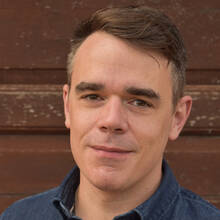Back in 1990, Pope John Paul II issued Ex corde Ecclesiae, a document that the late pontiff hoped would guide Roman Catholic universities and help them live out their Catholic identity. In The Chronicle of Higher Education, David B. House looks back on the last twenty years of Catholic education with Ex corde, and he makes a call for Catholic institutions to recommit to this document in order to be more faithful to their Catholic nature.
Rejecting the claims that Ex corde is a dead document (he notes that the US bishops did not adopt the document until 2001, after a decade of heated debate, and they rarely refer to it now), House says that the document has changed Catholic education in the United States in four distinct ways: Catholic colleges are more visible and valuable in the American education landscape; younger church leaders have been shaped by it, and are therefore more open to a “stronger Catholic identity;” a renewed sense of “Catholic identity” at many Catholic colleges and the founding of several small colleges that are “rigorously faithful to church teachings;” and enabling Catholics with the wherewithal to rally around bishops and the Newman Society following the decision of Notre Dame University’s decision to honor the US president.
“Identity” is a word House uses often in his commentary, and he claims that there are several Catholic colleges who, as a result of embracing Ex corde fully and faithfully, are living examples of true Catholic identity (he cites some, especially the newer ones formed in the last few decades by individuals who saw Catholic education in the US as straying too far from church teaching, including Magdalen College and St. Thomas More College in New Hampshire, Wyoming Catholic College, and John Paul the Great Catholic University).
Aside from offering a few schools as examples (most of which tend to attract very conservative faculties and students), House does not expand on what he means by “Catholic identity.” He ends with a prayer for all sides to come together in order to “renew their commitment to truth and integrity, set Ex corde fully in motion, and thereby prevail over the hypocrisy of being Catholic in name only.” Presumably for House, “Catholic in name only” is an apt description for Notre Dame, which he attacks explicitly in the article, and those other institutions that do not appear to be cheering loudly enough for the social positions of the right.
Naturally, there is a tendency by some to read House’s assessment of Ex corde as an attack on Catholic institutions that may not seem, to the casual observer anyway, to be living out their Catholicism as fiercely as they would like. The monks of Saint Anselm College, where I was a theology undergraduate, were berated by the scorekeepers of Catholic identity for allowing the Democratic party to host a debate on the campus during the 2004 presidential primary, and yet again a few years later when the college opened some floors in a male residence hall to women to alleviate overcrowding (that seems so quaint now, when today some universities are abolishing gender restrictions completely and allowing women and men to share rooms).
Would a stronger commitment to Ex corde at Saint Anselm have prevented such atrocities from taking place? It’s doubtful. Though I do not remember coming across Ex corde explicitly in my classes, Catholic identity (and especially our Benedictine identity) was a topic of conversation. We lived it in our theology, philosophy, science, and humanities seminars. We were fortunate to have a strong community of Benedictines share meals with us and a vibrant campus ministry center offer programs and lectures. We frequented a pub on campus to gather with friends and enjoy moments of laughter, curiosity, and intellectual pursuit. We had scores of professors who strove daily to help us discover truth and to give us a hand in answering universal questions about our existence and purpose. And what could be more Catholic than that?







Those interactions inside and outside the classroom are vital, and at a smaller college mark a positive atmosphere - one that makes an investment in education as much a way to live life, as to earn a living. The monks and faculty really do care, and work their hearts out in the process. St. Anselm is a gem deserving of wide recognition.
In addition, St. Anselm is committed to, get this, a core curriculum of “great books” of Western Civilization, a grounding in the classics of literature, art, science, politics and theology that informs conversations across disciplines. Columbia University pioneered the concept, which brings a foundational substance and structure to one’s studies.
St. Anselm outpaces Harvard’s approach in this regard, which has given itself over to a new Program in General Education with concepts like “Aesthetic and Interpretive Understanding, Culture and Belief, Empirical and Mathematical Reasoning.” One of Harvard’s government profs characterizes it as insipid and vacuous, per the Wall Street Journal.
The WSJ goes on to note that a core curriculum at schools like Columbia have a “stable foundation because it is organized around timeless themes expressed in works that are unlikely to go out of style.”
Indeed, St. Anselm is in that timeless tradition, with the added benefit of a Catholic sensibility so graciously clarified by the author of this thread. Go, St A’s!